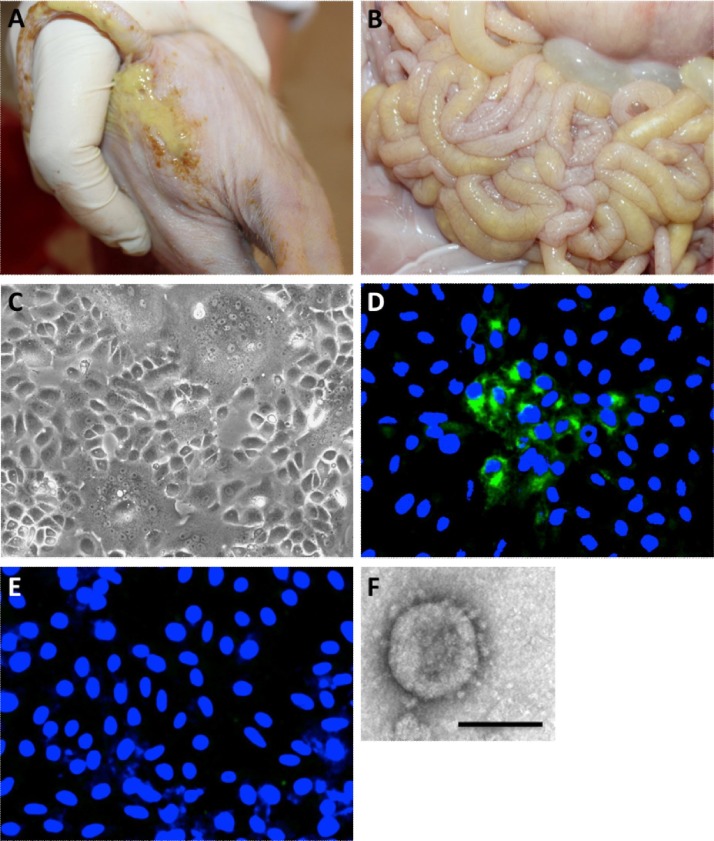Fig. 1.
Isolation and characterization of SeACoV. (A) A representative SeACoV-infected piglet showing clinical feature with watery feces. (B) Gross pathological lesions in the small intestine characterized by thin intestinal walls that contained moderate amounts of yellow watery feces. (C) Isolation of SeACoV-CH/GD-01/2017 in Vero cells showing CPE with syncytia formation at 48 h post-infection (hpi). (D and E) Immunofluorescence assay (IFA) result of SeACoV-infected Vero cells at 24 hpi (magnification = 200×). A positive sow serum sample (D) or a negative serum sample (E) (1:100 dilution each) collected from the disease outbreak farm was used as the first antibody followed by staining with a FITC-labeled rabbit anti-pig IgG. (F) Electron microscope image of the SeACoV/CH/GD-01 isolate (passage 5 on Vero cells) using phosphotungstic acid negative staining. Bar = 100 nm. All the results showed in panels C to F were obtained from plaque-purified virus. (For interpretation of the references to colour in this figure legend, the reader is referred to the web version of this article.)

